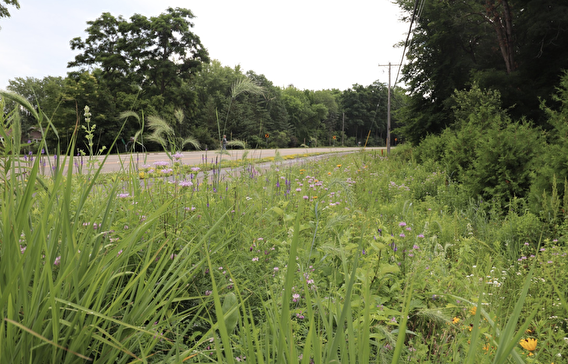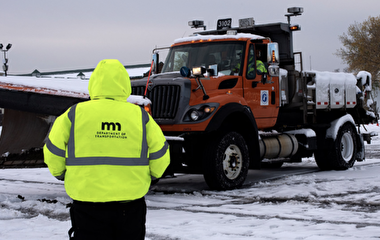
Transportation agencies revegetate roadsides after construction projects to provide road stability, stormwater filtration, and visual appeal. Revegetation is also a good opportunity to create pollinator-friendly habitat. However, planting and maintaining ditches can be expensive, funds for such projects are usually limited, and there isn’t much data on which methods actually work.
A team of U of M researchers set out to study the effectiveness of past revegetation efforts in Minnesota and provide best practice recommendations for transportation departments and roadside management organizations.
“This project will help agencies across the state refine the seed mixes they use with substantial benefits to pollinator habitat,” says Dan MacSwain, natural resource coordinator for Washington County Public Works and the technical liaison for the project. “It will also produce cost savings.”
The 2022 study was split into two parts. Part one measured the presence of bumblebees and flowers in roadside ditches and generally found a positive link between the two—suggesting that greater flower diversity promotes stronger pollinator populations.
“Our results suggest that roadsides could be managed with a ‘more flowers everywhere’ strategy without raising costs,” says Emilie Snell-Rood, associate professor with the Department of Ecology, Evolution, and Behavior and the principal investigator for the project.

This portion of the study also found that bumblebees are more prolific in roadside ditches where the surrounding landscape is also pollinator-friendly. This suggests that ditches alone cannot fully meet the habitat needs of insects, Snell-Rood says, and roadside restoration efforts will generally perform better if they’re located near already-established pollinator habitat.
Part two of the study focused on comparing the performance of native and non-native vegetation in roadside ditches. Native seed mixes, Snell-Rood notes, are generally more expensive to plant, and the survey found that native plants often tend to get crowded out by non-native species. Native plants have to be intentionally seeded and maintained over time.
“The ‘set it and forget it’ approach to native roadside revegetation efforts is insufficient if long-term establishment of native plants is the goal,” Snell-Rood says.
The insects that the survey studied—bumblebees and butterflies—showed a ready willingness to use non-native flowers for food. However, the study also points out that these insect groups are generalists. Revegetating ditches with non-native plants will not support more specialized pollinators—ones that need specific, native flowers to survive.
For generalized, pollinator-friendly revegetation practices, the researchers recommend using an inexpensive, non-native seed mix (such as alfalfa, red clover, or white clover) and mixing it with a handful of native species that have proven to be good at establishing themselves (such as wild bergamot, field thistle, goldenrod, and common milkweed). If the goal is to conserve a particular species, the roadside will need to be tailored to that species’ needs.
“Our results overall suggest roadside management for natives and pollinators requires some discussions within agencies and management organizations about primary goals,” Snell-Rood says.
The project was sponsored by MnDOT and the Minnesota Local Road Research Board.
Writer: Sophie Koch


